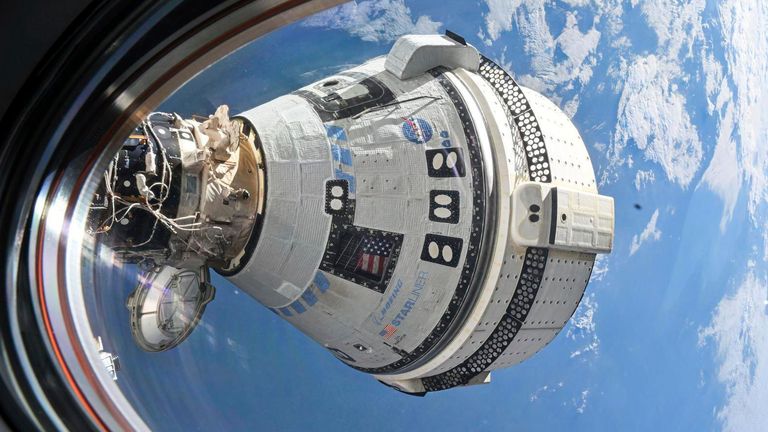The Starliner space capsule which developed faults as it transported two NASA astronauts to the International Space Station (ISS) is to be flown back to Earth unmanned on Friday.
It should be taking test pilots Sunita “Suni” Williams and Commander Barry “Butch” Wilmore back to Earth, but the pair are staying on the ISS instead after NASA decided it would not risk having them on board as planned.
The capsule suffered thruster failures and helium leaks on its way to the station in June, leaving the US space agency’s bosses to decide whether to bring the pair home or leave them in space.
NASA decided the retired US navy captains, who expected to be in space for eight days, would instead return on a SpaceX flight in February, extending their stay at the ISS to eight months. They have now been there for three months.
If all goes well, the Starliner capsule, running on autopilot carrying two empty blue spacesuits and some old station equipment, will touchdown in the New Mexico desert six hours after setting out.
Boeing has been bedevilled by problems after it signed a contract with NASA worth more than $4bn (£3bn) a decade ago, to take astronauts to and from space.
Its first test flight with no one aboard in 2019 ran into so many problems it had to repeat it in 2022, when even more flaws cropped up, and the cost of repairs topped $1bn (£0.76bn).
In contrast, SpaceX’s crew ferry flight later this month will be its 10th for NASA since 2020.
Its Dragon capsule will take off with only two astronauts rather than four as two seats are reserved for Wilmore and Williams for the return leg.
The stuck astronauts have lived on the space station before and settled in just fine, even though their mission focus has changed, NASA officials have said.
The capsule had suffered multiple thruster failures and propulsion-system helium leaks by the time it arrived at the space station.
Boeing carried out extensive thruster tests in space and on the ground, and said the vessel could safely bring the astronauts back. But NASA disagreed, preferring to leave them on the station.
Starliner will make a faster, simpler getaway than planned, using springs to push away from the space station and then short thruster firings to gradually increase the distance.
The original plan called for an hour of dallying near the station, mostly for picture-taking; that was cut to 20 or so minutes to reduce the stress on the capsule’s thrusters and keep the station safe.
Additional test firings of Starliner’s 28 thrusters are planned before the all-important descent from orbit.
Engineers want to learn as much as they can since the thrusters won’t return to Earth; the section containing them will be ditched before the capsule re-enters.
